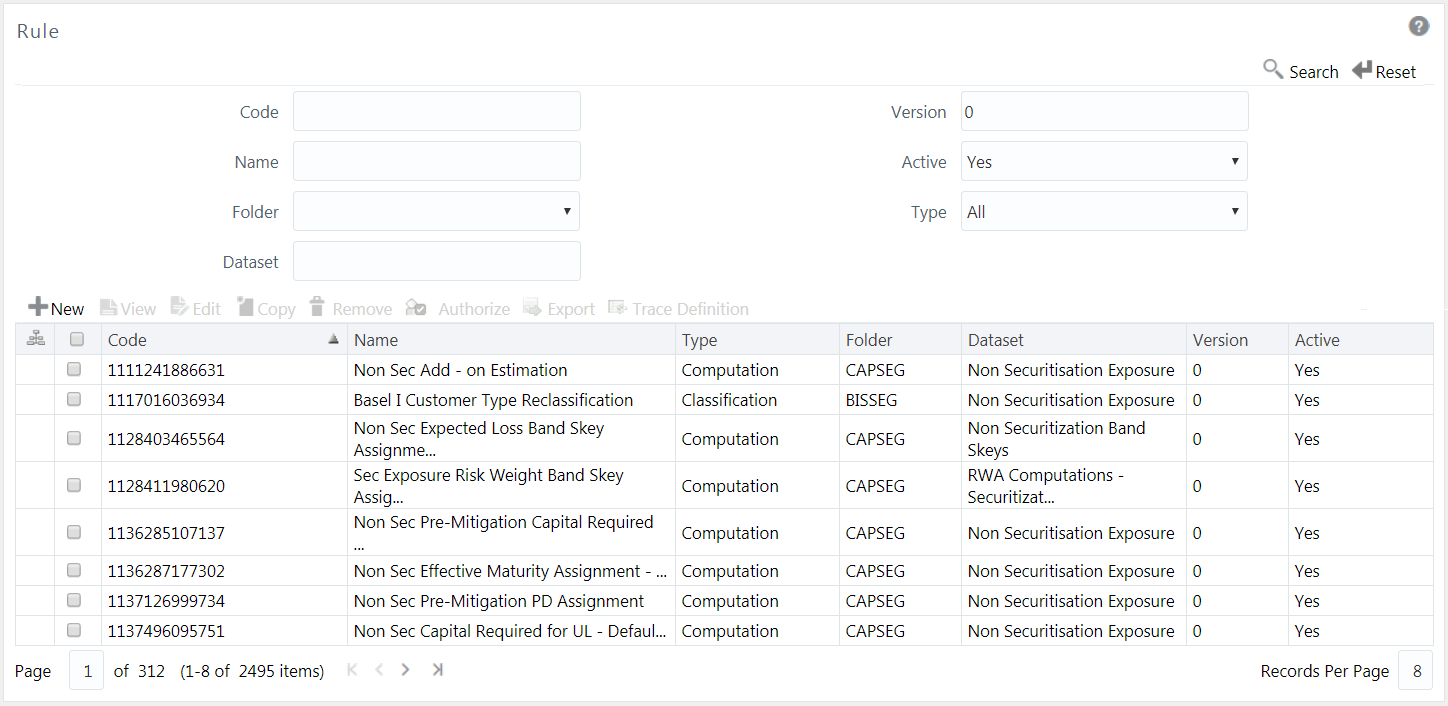Rule
Financial Institutions require constant monitoring and measurement of risk in order to conform to prevalent regulatory and supervisory standards. Such measurement often entails significant computations and validations with an organization’s data. Data must be transformed to support such measurements and calculations. The data transformation is achieved through a set of defined rules.
Figure 12-1 Rule window

The Rules option in the Rules Run Framework provides a framework that facilitates the definition and maintenance of a transformation. The metadata abstraction layer is used in the definition of rules where the user is permitted to re-classify the attributes in the data warehouse model, thus transforming the data. The underlying metadata objects such as Hierarchies, which are non-large or non-list, Datasets, and Business Processors drive the Rule functionality. An authorizer must approve the actions like creation, modification, copying, and deletion of a Rule for them to be effective.
The Rule window displays the rules created in the current Information Domain with the metadata details such as Code, Name, Description, Type, Folder, Dataset, Version, and Active status. For more information on how object access is restricted, see Object Security.
You can search for specific Rules based on Code, Name, Folder, Dataset, Version, Active status, or Type. The Folder drop-down list displays all public folders, shared folders to which your user group is mapped, and Private folders for which you are the owner. The Pagination option helps you to manage the view of existing Rules within the system. You can also click Code, Name, Description, Type, Folder, Dataset, Version, or Active tabs to sort the Rules in the List grid either in ascending or in descending order.
The Roles mapped for the Rule module are Rule Access, Rule Advanced, Rule Authorize, Rule Read Only, Rule Write, and Rule Phantom. Based on the roles mapped to your user group, you can access various screens in the Rule module. For more information, see Appendix A.